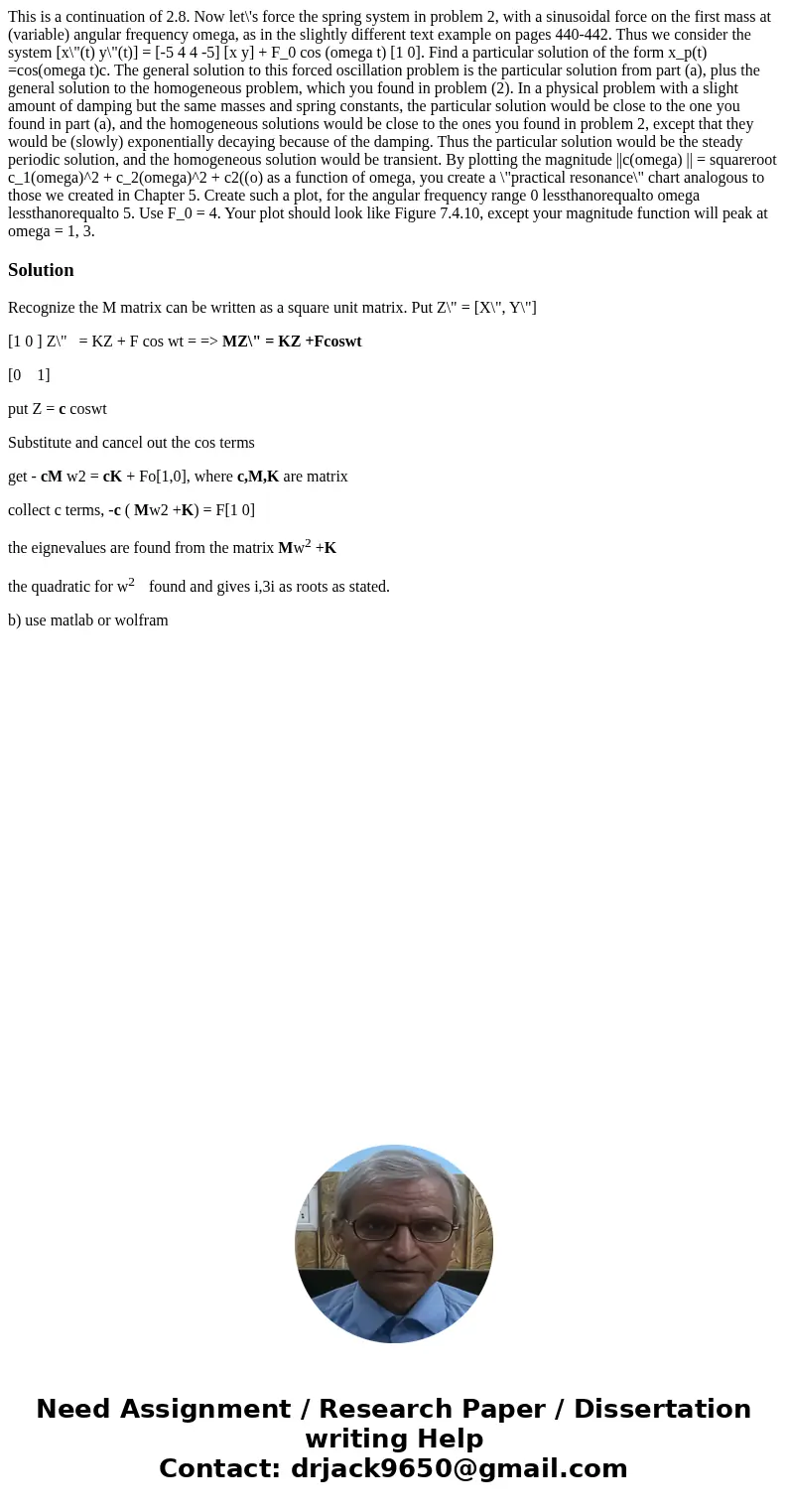This is a continuation of 28 Now lets force the spring syste
This is a continuation of 2.8. Now let\'s force the spring system in problem 2, with a sinusoidal force on the first mass at (variable) angular frequency omega, as in the slightly different text example on pages 440-442. Thus we consider the system [x\"(t) y\"(t)] = [-5 4 4 -5] [x y] + F_0 cos (omega t) [1 0]. Find a particular solution of the form x_p(t) =cos(omega t)c. The general solution to this forced oscillation problem is the particular solution from part (a), plus the general solution to the homogeneous problem, which you found in problem (2). In a physical problem with a slight amount of damping but the same masses and spring constants, the particular solution would be close to the one you found in part (a), and the homogeneous solutions would be close to the ones you found in problem 2, except that they would be (slowly) exponentially decaying because of the damping. Thus the particular solution would be the steady periodic solution, and the homogeneous solution would be transient. By plotting the magnitude ||c(omega) || = squareroot c_1(omega)^2 + c_2(omega)^2 + c2((o) as a function of omega, you create a \"practical resonance\" chart analogous to those we created in Chapter 5. Create such a plot, for the angular frequency range 0 lessthanorequalto omega lessthanorequalto 5. Use F_0 = 4. Your plot should look like Figure 7.4.10, except your magnitude function will peak at omega = 1, 3.
Solution
Recognize the M matrix can be written as a square unit matrix. Put Z\" = [X\", Y\"]
[1 0 ] Z\" = KZ + F cos wt = => MZ\" = KZ +Fcoswt
[0 1]
put Z = c coswt
Substitute and cancel out the cos terms
get - cM w2 = cK + Fo[1,0], where c,M,K are matrix
collect c terms, -c ( Mw2 +K) = F[1 0]
the eignevalues are found from the matrix Mw2 +K
the quadratic for w2 found and gives i,3i as roots as stated.
b) use matlab or wolfram

 Homework Sourse
Homework Sourse